Christopher Johns to Present Lecture October 31 at International Symposium in London
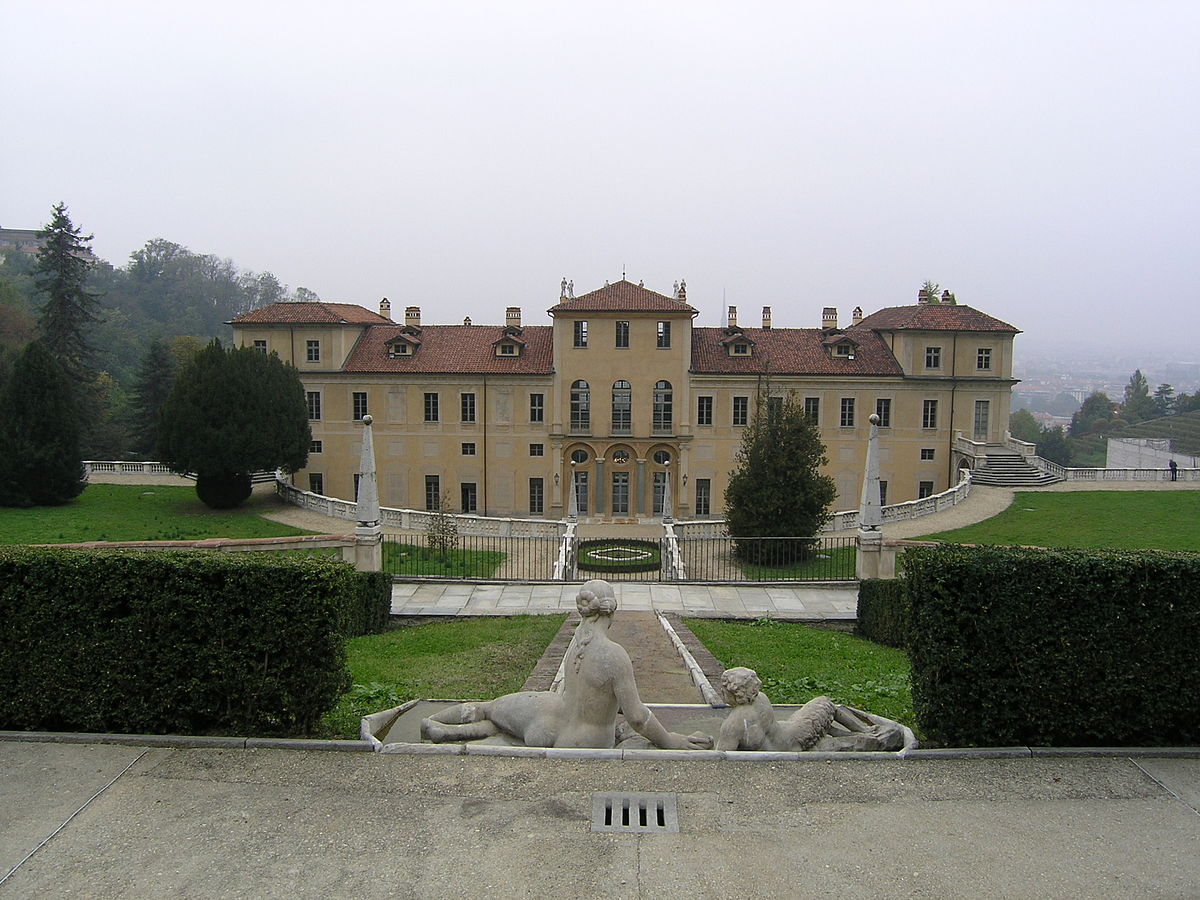 Enlightened Princesses: Britain and Europe, 1700-1820, an international symposium held October 29-31 in London, will bring together eminent academicians and museum scholars to investigate the role played by royal women—electresses, princesses, queens consort, reigning queens, and empresses—in the shaping of court culture and politics in Europe of the long eighteenth century.
Enlightened Princesses: Britain and Europe, 1700-1820, an international symposium held October 29-31 in London, will bring together eminent academicians and museum scholars to investigate the role played by royal women—electresses, princesses, queens consort, reigning queens, and empresses—in the shaping of court culture and politics in Europe of the long eighteenth century.
Christopher Johns, Norman L. and Roselea J. Goldberg Professor of History of Art, will present the lecture, “Two Queens and a Villa: Enlightenment Sociability in Turin,” on October 31 in the Tower of London. Other venues are Kensington Palace and Hampton Court Palace. Papers will explore such themes as royal women as political agents; royal women: networks and conversations; royal women as patrons of art and architecture; royal women and the crafting of image, and royal women: engaging with technology and nature.
Recent research has explored how in fulfilling these roles they made major contributions to the arts; the development of new models of philanthropy and social welfare; the promotion and support of advances in science and medicine; as well as trade and industry; and the furthering of imperial ambition. While local contexts may have conditioned the forms such initiatives took, their objectives were rooted in a European tradition of elite female empowerment.
The three-day symposium was organized by Historic Royal Palaces, the Yale Center for British Art, and the Paul Mellon Centre for Studies in British Art, London, in association with the exhibition ‘Enlightened Princesses: Caroline, Augusta, Charlotte, and the Shaping of the Modern World‘, on view at Kensington Palace from June 22 through November 12, 2017.
*Garden facade of Villa della Regina,Turin, Italy
Posted by vrcvanderbilt on October 27, 2017 in Conferences, Events, HART, Lectures, News, VRC
Using Digital Humanities to Interpret Early Christian Iconography on Doors of Santa Sabina
V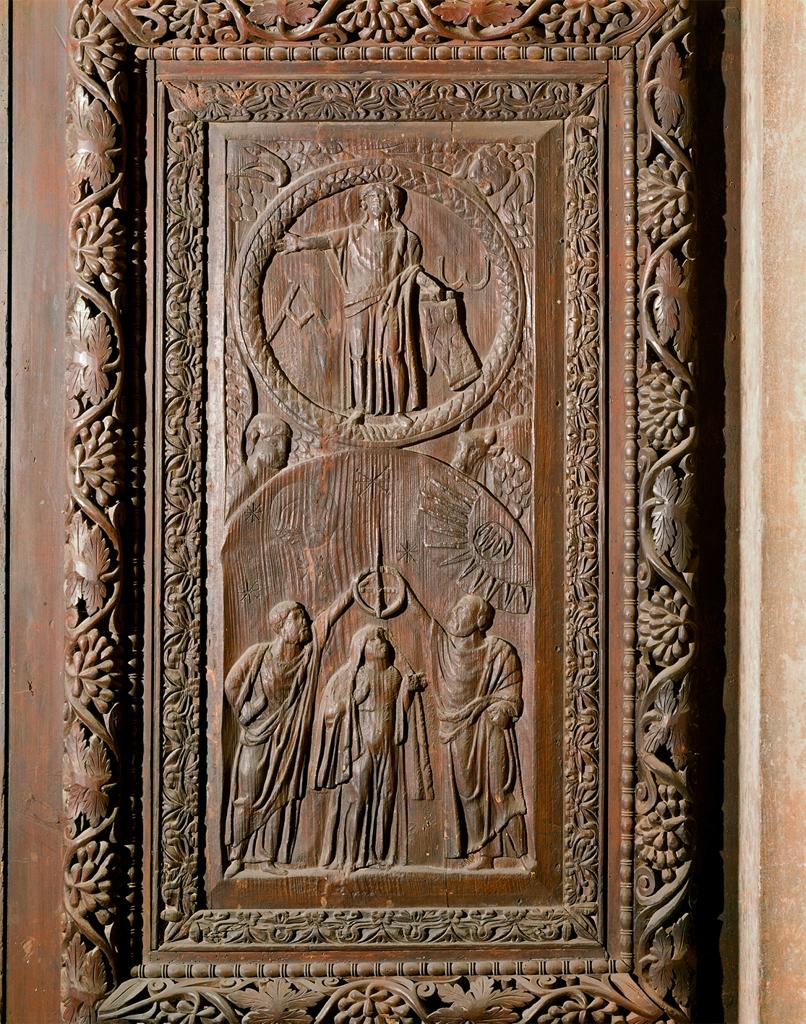 anderbilt University recently hosted ReLACS (Regional Late Antiquity Consortium Southeast), an annual workshop on Late Antiquity. I attended a talk held in the Center for Digital Humanities, “Using Digital Humanities to Solve Early Christian Mysteries: A Re-Examination of the ‘Ascension’ Panel on the Doors of Santa Sabina, Rome.”
anderbilt University recently hosted ReLACS (Regional Late Antiquity Consortium Southeast), an annual workshop on Late Antiquity. I attended a talk held in the Center for Digital Humanities, “Using Digital Humanities to Solve Early Christian Mysteries: A Re-Examination of the ‘Ascension’ Panel on the Doors of Santa Sabina, Rome.”
Lee M. Jefferson, NEH Associate Professor of Religion at Centre College, discussed the initial stages of his research on a carved wooden relief panel on the doors of Santa Sabina. Jefferson focused primarily on his interpretation of the iconographic meaning of the object held by Peter and Paul in the lower half of the panel, as well as previous interpretations of the panel and possible analogs in other examples of Late Antique art.
Toward the end of his talk Jefferson shifted to a discussion of digital humanities: how he hoped to use it in his research at Santa Sabina, as well as a broader discussion of its utility in higher learning institutions. High quality images of the door panels are difficult to find in the public domain, so Jefferson plans to first create high resolution images of the “Ascension” panel. He then intends to use photogrammetry tools to closely examine the original workmanship of the panel, as well as subsequent damage and repairs. Jefferson hopes that this will provide insight into the type of object held by Peter and Paul in the panel.
Jefferson characterized himself as a relatively new convert to digital humanities. He discussed having recently begun to understand the opportunities afforded by digital humanities and its tools. He also touched on pedagogical reasons for embracing digital humanities: with universities and colleges increasingly focused on STEM disciplines, it’s important to find ways to attract those students to liberal arts and humanities courses. Using digital humanities tools in the classroom offers students an opportunity to expand their knowledge to include the humanities while teaching them skills broadly applicable to many fields. It also encourages students with technological and scientific backgrounds to take an interest in humanities scholarship and bring more skills to the discipline.
In our Visual Resources Center, as well as others worldwide, we spend a lot of time developing skills with digital humanities technologies so that we can present these technologies to scholars as useful tools for their research. It was interesting and valuable to hear the perspective of a scholar approaching digital humanities on their own terms, as opposed to librarians and visual resources curators making suggestions to them for potential uses.—Shelby Merritt, assistant curator of visual resources, Department of History of Art
*Wooden relief panel from the doors of Santa Sabina, Rome, ca. 432. Courtesy of ArtStor.
Posted by vrcvanderbilt on October 25, 2017 in Digital Humanities, HART, Lectures, News, Technology, VRC
Alexis Castor to Present October 24 AIA Lecture on Jewelry in Ancient Greece and Etruria
 Gold earrings, necklaces and bracelets represented real wealth in the ancient world, and men and women wore jewelry on specific occasions to show off their own social position in the community, particularly in religious and funerary rituals. Alexis Castor, associate professor of classics, Franklin & Marshall College, Lancaster, PA, will deliver the AIA Lecture, “More than Glitter: Jewelry in Ancient Greece and Etruria,” at the Nashville Parthenon on Tuesday, October 24, at 6 pm.
Gold earrings, necklaces and bracelets represented real wealth in the ancient world, and men and women wore jewelry on specific occasions to show off their own social position in the community, particularly in religious and funerary rituals. Alexis Castor, associate professor of classics, Franklin & Marshall College, Lancaster, PA, will deliver the AIA Lecture, “More than Glitter: Jewelry in Ancient Greece and Etruria,” at the Nashville Parthenon on Tuesday, October 24, at 6 pm.
Castor will address how Greek and Etruscan elite classes in general, and women in particular, used jewelry to express their status. She will discuss how people of all ages wore personal ornaments as protective amulets to avoid harm, to show badges of office, to enchant, and to display wealth. Jewelry also served as wearable wealth that could be melted down in times of crisis. Her lecture will explore ways that jewelry functioned as bridal gifts, heirlooms, and even played a role in espionage. Beyond the shimmer of metal, these ornaments served as a beautiful, practical form of personal wealth.
The 2017 Anita Krause Bader Lecturer in Mediterranean Archaeology for the AIA’s National Lecture Program, Castor received her MA and PhD degrees in Near Eastern and Classical Archaeology from Bryn Mawr College. Her most recent publications include “Macedonian Lionesses: A New Paradigm for Female Jewelry Use (ca. 325-275 BCE)” in the Journal of Greek Archaeology (volume 2, 2017), and More than Glitter: Jewelry in Greece and Italy (1st millennium BCE), in progress, a monograph-length study that investigates the ways that men and women wore jewelry in Greece and Italy.
This lecture, free and open to the public, is cosponsored by the Archaeological Institute of America and The Conservancy for the Parthenon and Centennial Park. Those who plan to attend the AIA lecture are encouraged to call the Nashville Parthenon at 615.862.8431 to reserve a seat.
Posted by vrcvanderbilt on October 23, 2017 in Events, HART, HART in Nashville, Lectures, News, VRC
HART Alumna Jennifer Klos Shares Her Curatorial Eye and Helps People Choose
 Art is a part of our lives. It can be a blend of old and new, sophistication and whimsy, design and deeper meaning.
Art is a part of our lives. It can be a blend of old and new, sophistication and whimsy, design and deeper meaning.
Based in Dallas, Texas, art advisor and HART alumna Jennifer Klos (BA’03) assists private collectors in the acquisition of fine and decorative arts, specializing in modern and contemporary art. As president of Collector House Inc., founded in 2015, Klos enjoys sharing her curatorial eye, knowledge and expertise of the art world with clients nationwide.
“Art is layered and storied,” wrote Klos. “Collected spaces, whether in a home or a gallery, should feel that way, too. At the heart of it I’m a curator who helps people choose. I love bringing that blend of art & design to the work I do.”
During her eight-year tenure as curator of the Oklahoma City Museum of Art, she organized national and international exhibitions, expanding the presentation of decorative arts and design, and contemporary art installations. Klos earned her master’s degree in the history of decorative arts, design, and culture from the Bard Graduate Center in New York and her bachelor’s degree in art history and French from Vanderbilt. She is a graduate of the Inchbald School of Design, London, and Christie’s Education, London.
As an independent curator and art historian, Klos regularly lectures on the topics of art collecting, design history, and English country houses. Her recent lecture (October 18), “English Country House Interiors and the Treasures of Collecting Art,” was part of the Art & Design Speaker Series 2017 for Heritage Auction Galleries.
Klos is a board member of the American Friends of Attingham, a scholarly organization devoted to the study of English country houses and collections, and a member of the Association of Art Museum Curators and the Costume Society of America.
Posted by vrcvanderbilt on October 20, 2017 in HART, News, Student/Alumni, VRC
Rebecca VanDiver Featured in “Food for Thought” Series at the Frist Center for Visual Arts
In partnership with Vanderbilt University’s Office of Community, Neighborhood, and Government Relations, the Frist Center for the Visual Arts is presenting “Food for Thought: Changing the World,” a three-part series of lunchtime conversations with Vanderbilt professors, Frist Center curators, and other members of the Nashville community.
The first session on October 10 featured Rebecca VanDiver, assistant professor of African American art, and Jamaal Sheats, director and curator of Fisk University Galleries, who focused on the current exhibition World War I and American Art, exploring how the conflict shaped African American art as well as global affairs.
There are two remaining programs in the “Food for Thought” series (Tuesdays, November 14 and December 12) held from 11:30 a.m. to 1 p.m. in the Frist Center Auditorium. These are free with advance registration (lunch and gallery admission included). Call Vanderbilt University at 615.322.8585 to reserve a place.
Posted by vrcvanderbilt on October 20, 2017 in Events, HART, HART in Nashville, News, VRC
Betsey Robinson Moderates October 20 Workshop Session on the Western Delta in Late Antiquity
The hinterland of Alexandria was the setting for some of the earliest and most important monastic settlements in late antique Egypt. It is this area that produced the famous “sayings of the desert fathers,” and it is in this area, above all, that Christian pilgrims from the Roman Empire encountered Egyptian monasticism. This is the only area of late antique Egypt where monks may be said to have truly turned the desert into a city.
Betsey Robinson, associate p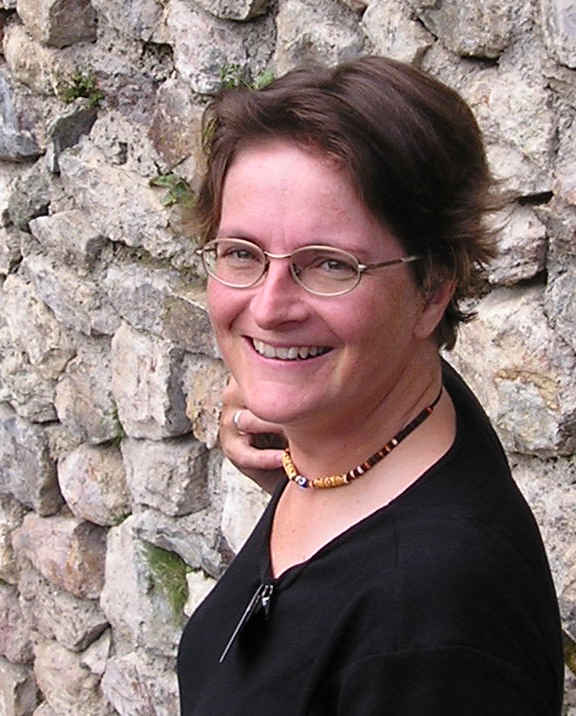 rofessor of history of art, will moderate a workshop session entitled “The Western Delta in Late Antiquity: Archaeology and History” that will be presented by Ariel Lopez, Rhodes College, at 9:15 a.m. on Friday, October 20, in the Divinity School Reading Room. The session is part of ReLACS 2017, a two-day interdisciplinary workshop on the study of Late Antiquity that features presentations by scholars working in the fields of history, classics, religious studies, law, Jewish studies, Islamic studies, art history, gender studies, archaeology, digital humanities, and literature.
rofessor of history of art, will moderate a workshop session entitled “The Western Delta in Late Antiquity: Archaeology and History” that will be presented by Ariel Lopez, Rhodes College, at 9:15 a.m. on Friday, October 20, in the Divinity School Reading Room. The session is part of ReLACS 2017, a two-day interdisciplinary workshop on the study of Late Antiquity that features presentations by scholars working in the fields of history, classics, religious studies, law, Jewish studies, Islamic studies, art history, gender studies, archaeology, digital humanities, and literature.
Free and open to the public, the Thursday (October 19) keynote lecture (Stephen J. Davis, “The Archaeology of Early Christian Monasticism: Evidentiary Problems and Criteria”) is at 4:10 pm in Cohen 203. All other events on Friday, October 20, will be held in the Divinity School Reading Room and at the Center for Digital Humanities. For more information regarding the full schedule, go to https://divinity.vanderbilt.edu/news/relacs2017.php.
The workshop is sponsored by the Program in Classical and Mediterranean Studies and the Divinity School. Additional sponsorship has been provided by the Department of Anthropology, the Department of Religious Studies, The Robert Penn Warren Center for the Humanities, the Department of History, the Department of History of Art, the Program in Jewish Studies, and the Vanderbilt Center for Digital Humanities.
Posted by vrcvanderbilt on October 19, 2017 in Conferences, Divinity School, Events, HART, Lectures, News, VRC
Stephen Davis to Deliver Keynote Lecture at Interdisciplinary Workshop on Late Antiquity October 19-20
 Stephen J. Davis, professor of religious studies and Near Eastern languages and civilization at Yale University, will deliver the keynote lecture, “The Archaeology of Early Christian Monasticism: Evidentiary Problems and Criteria” on Thursday, October 19, at 4:10 pm in Cohen Hall 203 followed by a reception. Davis will open ReLACS 2017, an interdisciplinary workshop on the study of Late Antiquity, with a reassessment of what we know—and how we know what we know—about the archaeological evidence for Christian monasticism in the first millennium CE. Assessing the current state of the field, he will first address problems we face in both the identification and the dating of “monastic” sites and then discuss criteria by which we can engage more critically with the material evidence available to us.
Stephen J. Davis, professor of religious studies and Near Eastern languages and civilization at Yale University, will deliver the keynote lecture, “The Archaeology of Early Christian Monasticism: Evidentiary Problems and Criteria” on Thursday, October 19, at 4:10 pm in Cohen Hall 203 followed by a reception. Davis will open ReLACS 2017, an interdisciplinary workshop on the study of Late Antiquity, with a reassessment of what we know—and how we know what we know—about the archaeological evidence for Christian monasticism in the first millennium CE. Assessing the current state of the field, he will first address problems we face in both the identification and the dating of “monastic” sites and then discuss criteria by which we can engage more critically with the material evidence available to us.
Since 2006 Davis has served as executive director of the Yale Monastic Archaeology Project (YMAP), conducting field work and training graduate students primarily at three sites in Egypt—the Monastery of John the Little in the north; the White Monastery and its federated women’s monastery at Atripe in the south. In 2013 he initiated a related project to catalog the major collection of Coptic and Arabic manuscripts at the Monastery of the Syrians in Wadi al-Natrun, Egypt. 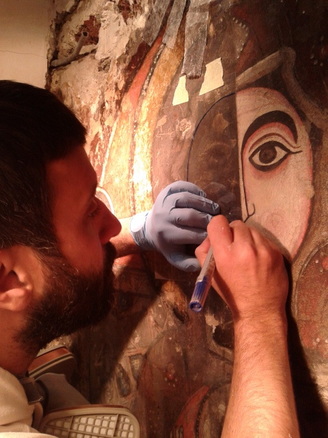 Most recently, he has written Monasticism: A Very Short Introduction for Oxford University Press (forthcoming in January 2018), and has founded a new book series called Christian Arabic Texts in Translation (CATT) with Fordham University Press. His research projects include the preparation of a collaborative volume on the YMAP excavations of a monastic residence at John the Little (entitled Dwelling in the Desert), as well as publications related to his team’s ongoing archaeological work at a women’s monastery at Atripe in Upper Egypt.
Most recently, he has written Monasticism: A Very Short Introduction for Oxford University Press (forthcoming in January 2018), and has founded a new book series called Christian Arabic Texts in Translation (CATT) with Fordham University Press. His research projects include the preparation of a collaborative volume on the YMAP excavations of a monastic residence at John the Little (entitled Dwelling in the Desert), as well as publications related to his team’s ongoing archaeological work at a women’s monastery at Atripe in Upper Egypt.
The workshop also features presentations of work by scholars working in the fields of history, classics, religious studies, law, Jewish studies, Islamic studies, art history, gender studies, archaeology, digital humanities, and literature. The steering committee that organized ReLACS 2017 includes three Vanderbilt professors, who are also workshop participants: David Michelson, assistant professor of the history of Christianity and history; Joe Rife, associate professor of classical and Mediterranean studies and founding program director, and Betsey Robinson, associate professor of history of art..
The ReLACS 2017 workshop is sponsored by the Program in Classical and Mediterranean Studies and the Divinity School. Additional sponsorship has been provided by the Department of Anthropology, the Department of Religious Studies, The Robert Penn Warren Center for the Humanities, the Department of History, the Department of History of Art, the Program in Jewish Studies, and the Vanderbilt Center for Digital Humanities.
The workshop is free and open to all VU faculty and students. The Thursday keynote lecture will be located in Cohen 203—all other events on Friday will be located in the Divinity School Reading Room and at the Center for Digital Humanities. For more information regarding the full schedule, go to https://divinity.vanderbilt.edu/news/relacs2017.php.
*Photograph of Stephen J. Davis; and photograph showing conservation of a severely threatened early medieval wall painting of the Virgin and Child in the White Monastery Church, March 2015, by Alberto Sucato.
Posted by vrcvanderbilt on October 17, 2017 in Conferences, Divinity School, Events, HART, Lectures, News, Vanderbilt University, VRC
Impact of First World War on Avant-Garde Modernism and Beauty Culture Examined in October 9 Goldberg Lecture
 David Lubin, Charlotte C. Weber Professor of Art, Wake Forest University, examines medical and humanitarian efforts to restore the faces of soldiers badly disfigured by trench warfare in the First World War and considers the downstream effects of these efforts on both avant-garde modernism and the commercial beauty culture that arose after the armistice.
David Lubin, Charlotte C. Weber Professor of Art, Wake Forest University, examines medical and humanitarian efforts to restore the faces of soldiers badly disfigured by trench warfare in the First World War and considers the downstream effects of these efforts on both avant-garde modernism and the commercial beauty culture that arose after the armistice.During the Great War, trenches exposed combatants’ faces to sniper fire and flying shrapnel. In previous wars such wounds would have proven fatal. Now, with improved medical and transport services, the wounded could be saved–but not always their faces as well. Crudely patched together and sent back to the front or to their families, men with “broken faces” were routinely ostracized, according to Lubin. His lecture will explore the humanitarian efforts of plastic surgeons to restore obliterated faces and sculptors to fashion prosthetic masks, while also considering postwar avant-garde modernism and the modern beauty culture, both of which evidence a visceral reaction to wartime unsightliness.
Lubin has written extensively on American art and popular culture. Shooting Kennedy: JFK and the Culture of Images examines the photographic portrayal of Jack and Jackie Kennedy from their public courtship in 1953 to the events of Dallas ten years later. The book won the Smithsonian Institution’s Charles Eldredge Prize for “outstanding scholarship in American art.” His most recent book, Grand Illusions: American Art and the First World War, was published in 2016 by Oxford University Press. In 2016-2017 he was the inaugural holder of the Terra Foundation for American Art Visiting Professorship at Oxford University.
Along with two co-curators, Lubin organized for the Pennsylvania Academy of the Fine Arts the traveling exhibition World War I and American Art, which opened at the Frist Center for the Visual Arts on October 6. On view through January 21, the exhibit provides an unprecedented opportunity to examine the war and its impact on American art.
The Goldberg Lecture, followed by a reception, is sponsored by the Department of History of Art. Parking is available in Lot 95 outside Cohen Hall. For more information, call (615) 322-2831.
*American Red Cross photographer. Soldier with mutilated face protected by one of Anna Coleman Ladd’s masks, 1918. Black-and-white photographic print from digital file, 8 3/4 x 6 3/8 inches. Library of Congress, Washington, DC, Prints and Photographs Division.
Posted by vrcvanderbilt on October 5, 2017 in Events, HART, Lectures, News, VRC
Richard Ormond Lectures on John Singer Sargent as Official War Artist on October 6 at the Frist
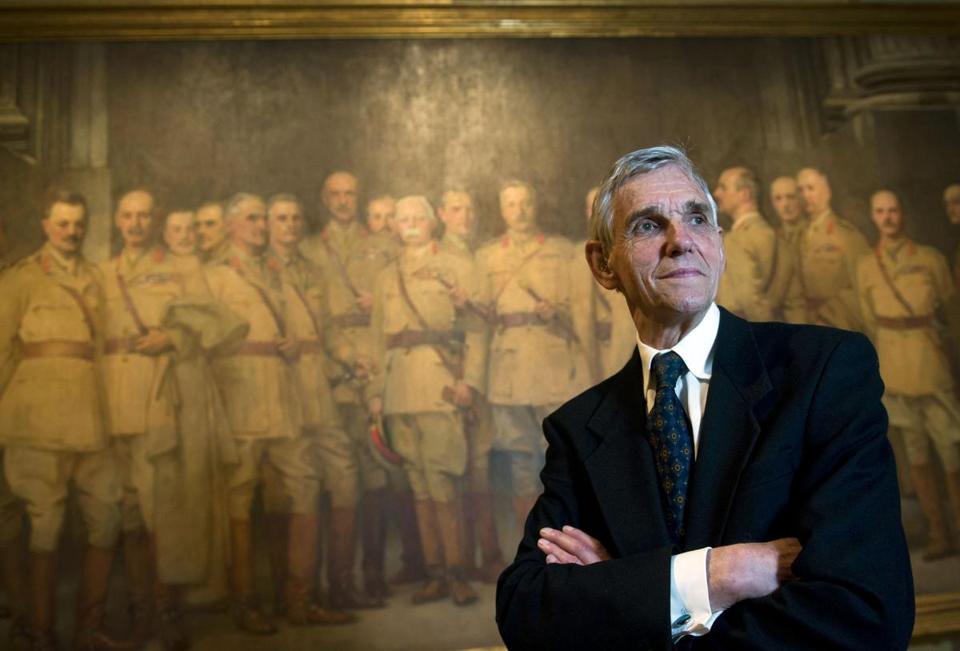 John Singer Sargent’s engagement as an official war artist during the First World War is an involved and protracted story. It led to the creation of his masterpiece Gassed (1919), a highlight of the Frist Center’s current exhibition World War I and American Art, and to a sequence of remarkable watercolors painted near the front line. It was followed by General Officers of World War I (1922), a group portrait of British and Commonwealth commanders.
John Singer Sargent’s engagement as an official war artist during the First World War is an involved and protracted story. It led to the creation of his masterpiece Gassed (1919), a highlight of the Frist Center’s current exhibition World War I and American Art, and to a sequence of remarkable watercolors painted near the front line. It was followed by General Officers of World War I (1922), a group portrait of British and Commonwealth commanders.
In his October 6 lecture, “Mr. Sargent Goes to War,” Richard Ormond, Commander of the British Empire, places these works in the context of Sargent’s career by analyzing the artist’s response to the horrors of war, tracing the sources of his inspiration, and charting the stages of his artistic process. This lecture, held at 6:30 pm at the Frist Center for the Visual Arts on the opening day of the exhibition, is supported in part by Vanderbilt’s Department of History of Art.
Ormond is a former deputy director of London’s National Portrait Gallery and former director of the National Maritime Museum in Greenwich, England. A great-nephew of John Singer Sargent, Ormond is currently director of the Sargent catalogue raisonné project, as well as co-author of the nine-volume Sargent survey published by Yale University Press. Ormond has curated many Sargent exhibitions, including the Met’s Sargent: Portraits of Artists and Friends (2015). His books on nineteenth-century British art include studies of Edwin Landseer, Frederic Leighton, George Frederic Watts, and Franz Xaver Winterhalter, among others.
Photo of RIchard Ormond in front of John Singer Sargent’s General Officers of World War I (National Portrait Gallery, London), courtesy Boston Globe
Posted by vrcvanderbilt on October 4, 2017 in Events, HART, HART in Nashville, Lectures, News, VRC
Alumna Lydia Ohl Introduces Work of Cai Guo-Qiang and Screening of “Sky Ladder” on October 5

Lydia Ohl, a Vanderbilt HART major who graduated in 2011, will present “Art History in Real Time: Archiving Cai Guo-Qiang” on Thursday, October 5, at 12:30 pm in Cohen Hall 203 on the Peabody campus followed by a 1:10-2:25 pm documentary screening of Sky Ladder: The Art of Cai Guo-Qiang. Ohl, head of archives at Cai Studio, will provide an introduction to the Chinese artist’s life and work as well as her role in the collection and preservation of Cai Guo-Qiang’s art and personal history.
Sky Ladder: The Art of Cai Guo-Qiang is a breathtaking, narrative documentary film directed by Academy Award winner Kevin Macdonald. Told through the eyes of family, friends, collaborators, art experts, and Cai himself, along with rare footage selected from the artist’s archives, Sky Ladder follows Cai’s meteoric rise on the international stage. It is a dazzling journey that culminates in his becoming an artist known for “lighting fires” all over the world and filling the sky with shimmering fireworks or colorful smoke.
According to Artnet News (October 14, 2016), perhaps Cai‘s most compelling, personal work yet is Sky Ladder, a 1,650-foot-tall ladder held aloft by a giant balloon and rigged with explosives. As the massive sculpture ignites, it creates a fiery vision that miraculously ascends to the heavens. The film opens with Cai reflecting on the history of gunpowder, one of China’s most significant contributions to the world. “They were actually looking for an elixir to make themselves immortal,” he told the interviewer.
Ohl’s presentation and the screening of Sky Ladder is sponsored by the Asian Studies Program and the Department of History of Art as part of Global/Asia: Celebrating 50 Years of Asian Studies at Vanderbilt.
*Sky Ladder, June 2015. Photo: Courtesy of Cai Studio/Netflix ©
Posted by vrcvanderbilt on October 3, 2017 in Events, HART, Lectures, News, Student/Alumni, VRC

©2025 Vanderbilt University ·
Site Development: University Web Communications